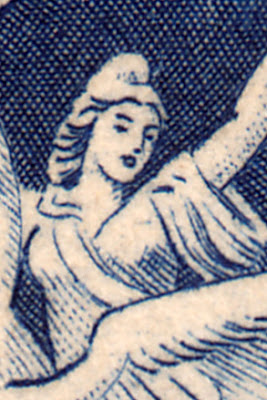That deflated feeling that comes from discovering a stamp you need to complete a collection is way beyond your price range. It is an awful feeling, trying to come to terms with the very real possibility that you may never be able to acquire a particular stamp, and therefore, always have a blank space in your album. This situation, in my view, can be even more heartbreaking when you have chosen a collection that you have - albeit wrongly - assumed could be completed over time while working within tight budgetary constraints.
So how do you deal with such a conundrum? This is a question I am now wrestling with, so I thought musing about it may help bring some clarity. My current dilemma arose a few days ago while I was looking through my new Stanley Gibbons France Catalogue. I had turned to the Monaco section of the catalogue to have a look at the newest issues. As I was flicking through my eye caught a particularly nice diamond style set of airmail stamps issued in 1955, SG 508-11a. When I stopped to have a look I discovered that the set of four was designed by Pierre Gandon, and Gandon engraved three of the four. My excitement over finding this gorgeous set was, however, short-lived! The instant I spotted the catalogue value of the highest value in the set, my heart sank. £500. Yes, you read right. £500!
Here is the offending stamp - SG 511. 1000f Cormorants.
It is a truly beautiful stamp, but alas, at £500 this stamp is totally out of reach. Now I know what you're thinking. Catalogue value doesn't truly reflect current market value. So with that in mind, I went online and had a look. Before I go any further I have to say that I have never spent more than $50 AUS on a stamp. Not because I didn't want to, but simply haven't had the means to do so. This is not a woe-is-me speech. Just a statement of fact. With this known, you will understand then why the online prices of this stamp are still beyond reach...for the time-being anyway! The average online price for this issue is $95-105 AUS.
But it is not all doom and gloom. There is a small ray of light at the end of the very narrow tunnel. There is the possibility of a used example appearing on the market. So far I haven't found one markedly cheaper than a mint example. But who knows what the future will hold?
There is one other option. This stamp when issued in 1955 was perforated 11. In 1957 the stamp was reprinted with perforation 13. The latter example has a lower catalogue value of £150, which means a distinctly lower market price. Indeed, I have found an example that, with a little saving, is right at the top end of my budget. This will allow me to have an example of Gandon's engraving, but it will not fill the 1955 space in my album. But I have been asking myself, does this really matter, given the 1955 issue is so darn expensive? Probably not. But I'm sure I'm not alone when I say, "I don't like blank spaces!" Anyway, enough rambling.
Until next time...

































